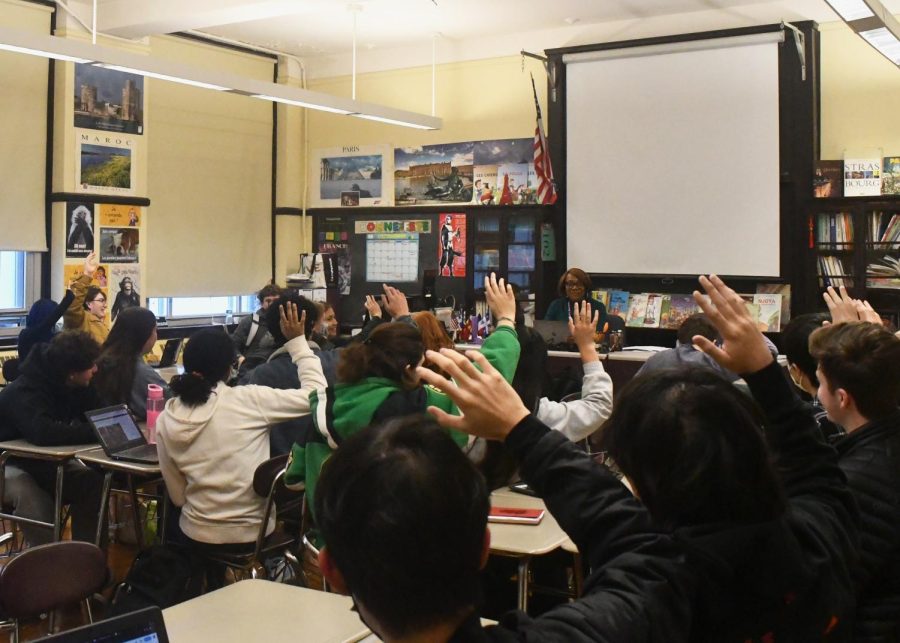Raise a Hand Against Forced Participation
Many students wear two masks when entering the classroom: a physical mask for COVID-19 and a figurative mask for school. This figurative mask conceals one’s more sociable side, stemming from a feeling of unfamiliarity and discomfort in the classroom.
Students’ behaviors are influenced by the knowledge that how they act in class directly impacts their grades. Although it is important to encourage students to stay engaged, conventional methods of grading involvement tend to do more harm than good.
Rather than assessing class participation, teachers should lean toward grading students based on class engagement — a better representation of who the student is and what the student does — to build a comfortable and productive learning environment.
Differentiating between class participation and class engagement is key; while one is based primarily on verbal and visual cues, the other is more subjective and less quantitative. Class engagement involves gauging how much a student is interacting with the class and its material, both inside and outside the classroom.
If students are aware of the expectations for their engagement, they are more likely to engage in a way that the teacher is able to grade fairly. Transparency from teachers to students is essential for creating a constructive class setting.
The traditional participation system is a source of stress for students. When teachers cold-call, they keep students on edge, dreading being singled out. While the anxiety-inducing technique may increase student attentiveness, putting them on the spot feeds into a fear of being wrong.
Boston Latin School English teacher Ms. Blake Barich points out, “Being vocal in class is definitely important. But it’s also not just about the number of times someone vocalizes. I also assess the quality of what students say, which doesn’t mean they have to always be correct. I appreciate students who are willing to engage in the material, make mistakes and so forth.”
The vast majority of BLS students strive to do their best in a challenging environment, but variations of what is “best” look different from student to student. Allowing students the opportunity to be incorrect and learn from their mistakes is essential in developing critical thinking skills, a necessity for future careers and education.
BLS Facing History teacher Ms. Judi Freeman, who teaches a primarily discussion-centered class, notices that “the kids who are super quiet in class just knock [writing assignments responding to class material] out of the park. It’s really interesting.” Students connect with material in a variety of ways, which can be reflected by their engagement in other class activities such as smaller group discussions and notetaking.
Not all students process information the same way. A student may not be as vocal with their ideas and thinking processes, but that does not mean that they are unengaged with the class. Emily Zhao (I), who is dedicating her Senior Capstone project to exploring the effectiveness and accuracy of class participation grades, agrees, saying, “We don’t have an equitable way to grade class participation.”
With BLS’s renewed attention on mental health in a high-stress environment, it is crucial for the school to maintain a safe and understanding community. School is stressful enough as is. By embracing class engagement, students can receive a grade boost by demonstrating their understanding holistically.
An accepting environment nurtures meaningful relationships with teachers and peers and provides memorable lessons that are enjoyable for all. In turn, students feel more comfortable asking questions and finding class topics that are more relatable when the focus is on building upon each other’s ideas. Students should be assessed on their willingness to learn and their understanding rather than their ability to regurgitate facts. Zhao notes, “It fosters a more welcoming and safer environment where it’s students’ voices and what they want to say.”
Although some may point out the apparent impracticality of grading based on class engagement, it is important for a school community to prioritize a safe and accepting environment whenever possible. These relationships strengthen the atmosphere of the school and foster more inquisitive and genuine connections within the community.







